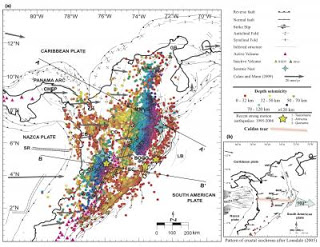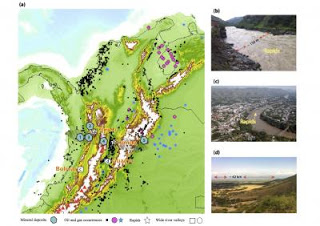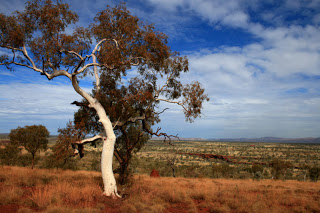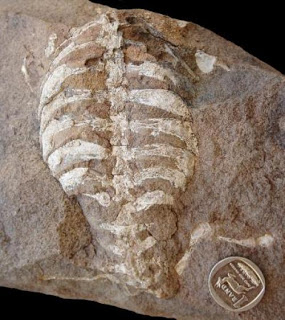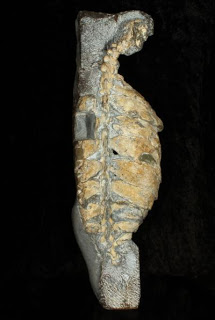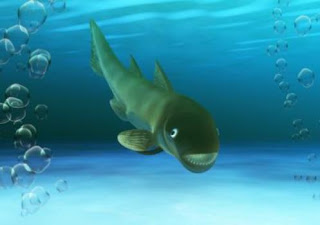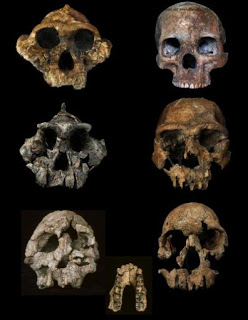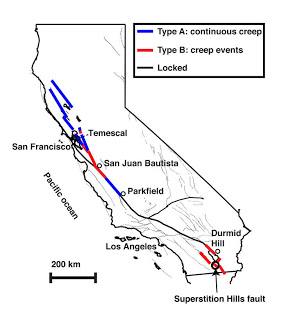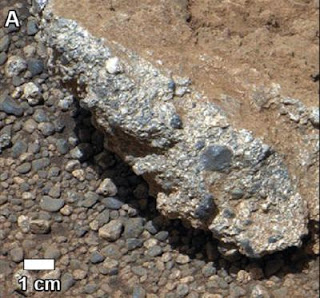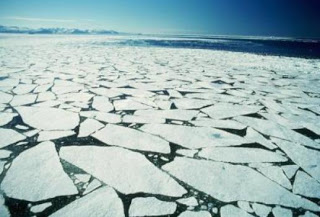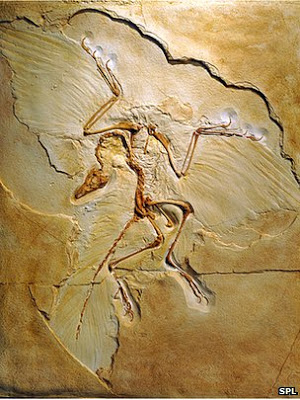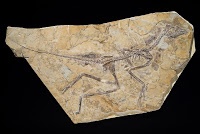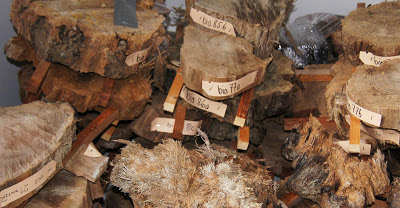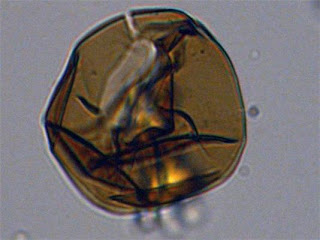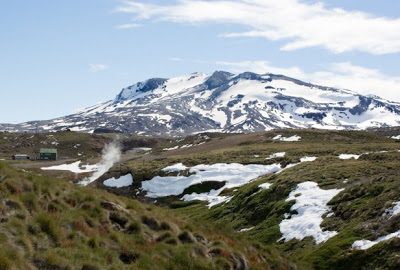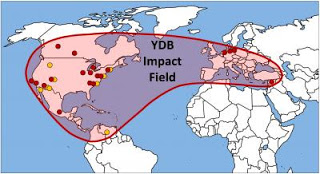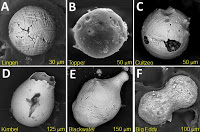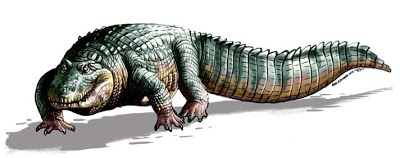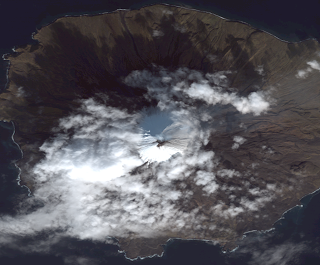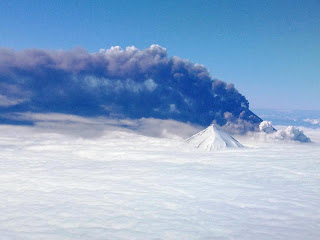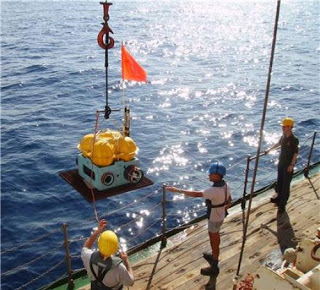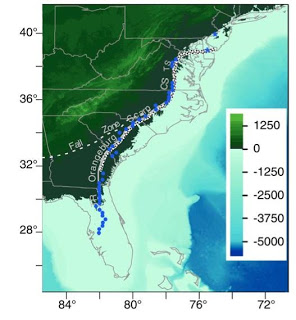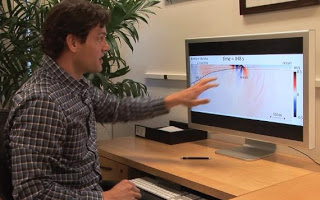
Stanford scientists have identified key acoustic characteristics of the 2011 Japan earthquake that indicated it would cause a large tsunami. The technique could be applied worldwide to create an early warning system for massive tsunamis.
On March 11, 2011, a magnitude 9.0 undersea earthquake occurred 43 miles off the shore of Japan. The earthquake generated an unexpectedly massive tsunami that washed over eastern Japan roughly 30 minutes later, killing more than 15,800 people and injuring more than 6,100. More than 2,600 people are still unaccounted for.
Now, computer simulations by Stanford scientists reveal that sound waves in the ocean produced by the earthquake probably reached land tens of minutes before the tsunami. If correctly interpreted, they could have offered a warning that a large tsunami was on the way.
Although various systems can detect undersea earthquakes, they can’t reliably tell which will form a tsunami, or predict the size of the wave. There are ocean-based devices that can sense an oncoming tsunami, but they typically provide only a few minutes of advance warning.
Because the sound from a seismic event will reach land well before the water itself, the researchers suggest that identifying the specific acoustic signature of tsunami-generating earthquakes could lead to a faster-acting warning system for massive tsunamis.
Discovering the signal
The finding was something of a surprise. The earthquake’s epicenter had been traced to the underwater Japan Trench, a subduction zone about 40 miles east of Tohoku, the northeastern region of Japan’s larger island. Based on existing knowledge of earthquakes in this area, seismologists puzzled over why the earthquake rupture propagated from the underground fault all the way up to the seafloor, creating a massive upward thrust that resulted in the tsunami.
Direct observations of the fault were scarce, so Eric Dunham, an assistant professor of geophysics in the School of Earth Sciences, and Jeremy Kozdon, a postdoctoral researcher working with Dunham, began using the cluster of supercomputers at Stanford’s Center for Computational Earth and Environmental Science (CEES) to simulate how the tremors moved through the crust and ocean.
The researchers built a high-resolution model that incorporated the known geologic features of the Japan Trench and used CEES simulations to identify possible earthquake rupture histories compatible with the available data.
Retroactively, the models accurately predicted the seafloor uplift seen in the earthquake, which is directly related to tsunami wave heights, and also simulated sound waves that propagated within the ocean.
In addition to valuable insight into the seismic events as they likely occurred during the 2011 earthquake, the researchers identified the specific fault conditions necessary for ruptures to reach the seafloor and create large tsunamis.
The model also generated acoustic data; an interesting revelation of the simulation was that tsunamigenic surface-breaking ruptures, like the 2011 earthquake, produce higher amplitude ocean acoustic waves than those that do not.
The model showed how those sound waves would have traveled through the water and indicated that they reached shore 15 to 20 minutes before the tsunami.
“We’ve found that there’s a strong correlation between the amplitude of the sound waves and the tsunami wave heights,” Dunham said. “Sound waves propagate through water 10 times faster than the tsunami waves, so we can have knowledge of what’s happening a hundred miles offshore within minutes of an earthquake occurring. We could know whether a tsunami is coming, how large it will be and when it will arrive.”
Worldwide application
The team’s model could apply to tsunami-forming fault zones around the world, though the characteristics of telltale acoustic signature might vary depending on the geology of the local environment. The crustal composition and orientation of faults off the coasts of Japan, Alaska, the Pacific Northwest and Chile differ greatly.
“The ideal situation would be to analyze lots of measurements from major events and eventually be able to say, ‘this is the signal’,” said Kozdon, who is now an assistant professor of applied mathematics at the Naval Postgraduate School. “Fortunately, these catastrophic earthquakes don’t happen frequently, but we can input these site specific characteristics into computer models — such as those made possible with the CEES cluster — in the hopes of identifying acoustic signatures that indicates whether or not an earthquake has generated a large tsunami.”
Dunham and Kozdon pointed out that identifying a tsunami signature doesn’t complete the warning system. Underwater microphones called hydrophones would need to be deployed on the seafloor or on buoys to detect the signal, which would then need to be analyzed to confirm a threat, both of which could be costly. Policymakers would also need to work with scientists to settle on the degree of certainty needed before pulling the alarm.
If these points can be worked out, though, the technique could help provide precious minutes for an evacuation.
The study is detailed in the current issue of the journal The Bulletin of the Seismological Society of America.


